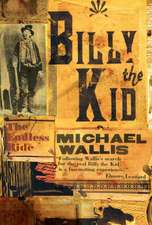Cahokia's Countryside: Household Archaeology, Settlement Patterns, and Social Power
Autor Mark W. Mehreren Limba Engleză Paperback – 30 sep 1995
In this first comprehensive analysis of several recently uncovered sites in the American Bottom region, Mehrer focuses on household archaeology to shed light on the daily lives of the Mississippian people. He examines the objects of daily use—domestic and ceremonial buildings, storage and processing pits, mundane and exotic artifacts—to reconstruct the framework of everyday life and to show how the routines of early native people changed with time. New findings reveal the changing roles of households in their communities, exposing a social order more complex than previously thought.
Mehrer examines seven sites in the American Bottom region—the Robert Schneider, BBB Motor, Turner-DeManger, Florence Street, Julien, Range, and Carbon Dioxide sites—and integrates his findings with new information from the large Cahokia mound center. Analyzing patterns of debris distribution, pit morphology and arrangement, and household organization, he reveals much about the social and cultural developments in the region. While illuminating the daily lives of Cahokians, Mehrer develops an analytical approach to archaeological site data that can be applied in other parts of the world.
The Cahokia region is of special interest because the Cahokia site is the largest mound center in North America and because the Mississippian society there rose and fell long before Europeans arrived. Although archaeologists have previously focused on Cahokia's elite population, until now little has been known about its rural residents.
Mehrer examines seven sites in the American Bottom region—the Robert Schneider, BBB Motor, Turner-DeManger, Florence Street, Julien, Range, and Carbon Dioxide sites—and integrates his findings with new information from the large Cahokia mound center. Analyzing patterns of debris distribution, pit morphology and arrangement, and household organization, he reveals much about the social and cultural developments in the region. While illuminating the daily lives of Cahokians, Mehrer develops an analytical approach to archaeological site data that can be applied in other parts of the world.
The Cahokia region is of special interest because the Cahokia site is the largest mound center in North America and because the Mississippian society there rose and fell long before Europeans arrived. Although archaeologists have previously focused on Cahokia's elite population, until now little has been known about its rural residents.
Preț: 310.57 lei
Nou
Puncte Express: 466
Preț estimativ în valută:
59.43€ • 64.75$ • 50.08£
59.43€ • 64.75$ • 50.08£
Carte tipărită la comandă
Livrare economică 23 aprilie-07 mai
Preluare comenzi: 021 569.72.76
Specificații
ISBN-13: 9780875805658
ISBN-10: 0875805655
Pagini: 231
Dimensiuni: 152 x 229 x 15 mm
Greutate: 0.37 kg
Ediția:1
Editura: Northern Illinois University Press
Colecția Northern Illinois University Press
ISBN-10: 0875805655
Pagini: 231
Dimensiuni: 152 x 229 x 15 mm
Greutate: 0.37 kg
Ediția:1
Editura: Northern Illinois University Press
Colecția Northern Illinois University Press
Recenzii
"A new and insightful synthesis of change in late prehistoric Mississippian communities.... A pace-setting example of archaeological research."—Choice
"A valuable contrast to the traditional focus on big sites and prominent mounds.... Lively debates over issues raised...will undoubtedly continue for a long time."
—Antiquity
"A valuable contrast to the traditional focus on big sites and prominent mounds.... Lively debates over issues raised...will undoubtedly continue for a long time."
—Antiquity
Cuprins
Table of Contents
Preface
Introduction
Theoretical Perspectives on Settlement in the Cahokia Region
Sites, Features, and Methodology
Analysis: Patterns of Settlement in the Archaeological Record
Interpretation: Summary and Settlement Model
Conclusion: Changing Life Ways in a Rural Landscape
Notes
Works Cited
Index
Introduction
Theoretical Perspectives on Settlement in the Cahokia Region
Sites, Features, and Methodology
Analysis: Patterns of Settlement in the Archaeological Record
Interpretation: Summary and Settlement Model
Conclusion: Changing Life Ways in a Rural Landscape
Notes
Works Cited
Index
Descriere
In this first comprehensive analysis of several recently uncovered sites in the American Bottom region, Mehrer focuses on household archaeology to shed light on the daily lives of the Mississippian people. He examines the objects of daily use—domestic and ceremonial buildings, storage and processing pits, mundane and exotic artifacts—to reconstruct the framework of everyday life and to show how the routines of early native people changed with time. New findings reveal the changing roles of households in their communities, exposing a social order more complex than previously thought.
Mehrer examines seven sites in the American Bottom region—the Robert Schneider, BBB Motor, Turner-DeManger, Florence Street, Julien, Range, and Carbon Dioxide sites—and integrates his findings with new information from the large Cahokia mound center. Analyzing patterns of debris distribution, pit morphology and arrangement, and household organization, he reveals much about the social and cultural developments in the region. While illuminating the daily lives of Cahokians, Mehrer develops an analytical approach to archaeological site data that can be applied in other parts of the world.
The Cahokia region is of special interest because the Cahokia site is the largest mound center in North America and because the Mississippian society there rose and fell long before Europeans arrived. Although archaeologists have previously focused on Cahokia's elite population, until now little has been known about its rural residents.
Mehrer examines seven sites in the American Bottom region—the Robert Schneider, BBB Motor, Turner-DeManger, Florence Street, Julien, Range, and Carbon Dioxide sites—and integrates his findings with new information from the large Cahokia mound center. Analyzing patterns of debris distribution, pit morphology and arrangement, and household organization, he reveals much about the social and cultural developments in the region. While illuminating the daily lives of Cahokians, Mehrer develops an analytical approach to archaeological site data that can be applied in other parts of the world.
The Cahokia region is of special interest because the Cahokia site is the largest mound center in North America and because the Mississippian society there rose and fell long before Europeans arrived. Although archaeologists have previously focused on Cahokia's elite population, until now little has been known about its rural residents.












